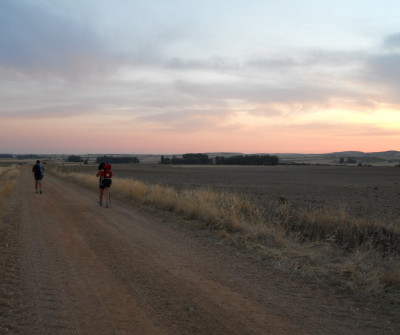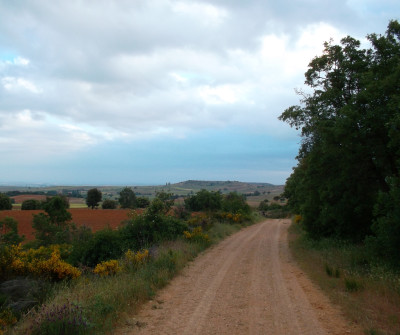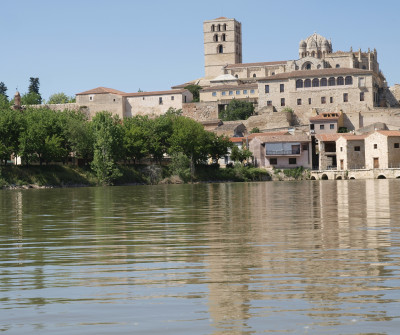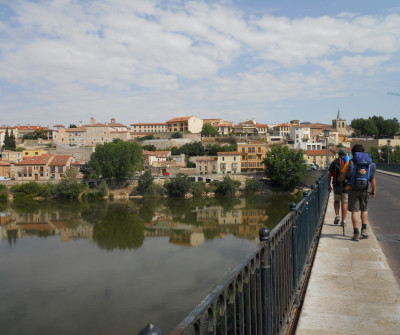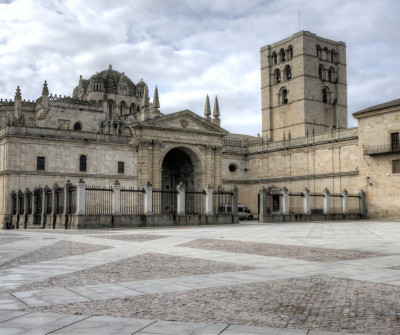After a well-earned rest, you start another long section, but this is mostly on flat land and nice gravel roads. You leave El Cubo del Vino on the same path you came by the previous day, to continue along the abandoned tracks of the old Salamanca-Zamora railway line.
READ MOREAfter a long straight stretch and 13 kilometres away from the starting point, you reach Villanueva de Campeán, a small village where you can see the ruins of the convent of Nuestra Señora del Soto. You have to continue on the gravel road but you may either take a detour towards San Marcial or continue straight towards Zamora, already visible on the horizon.
Past the rivulet of El Perdigón and the industrial park of Los Llanos, you access Zamora through the Calle Fermoselle to the medieval bridge on the River Duero, built in the 12th century. The old town of this provincial capital still has many examples of Romanesque architecture, with some twenty churches built in this style. The Cathedral is a Romanesque jewel, with its dome covered in scales, the oldest in the whole of Castilla y León.
You can also visit the 11th-century Castillo, a castle with its full perimeter, bailey and keep. The walls of the city are still standing, and the Casa del Cid, also called Casa de Arias Gonzalo, is the place where this legendary knight of the Reconquista is supposed to have lived as a child.
In Zamora, you can also visit the Museo Catedralicio, with its jewels and tapestries, the Centro de Interpretación de las Ciudades Medievales, the Museo de Zamora, the Museo de Semana Santa, the Parador and its more than twenty Romanesque churches.
Coming from the Cathedral and El Castillo towards the Plaza Mayor and the city centre, you can see the Art Nouveau buildings on the pedestrian street of Santa Clara. The most remarkable one is at Plaza Sagasta. Visiting the railway station, a fine building, is also recommended by experts.
The typical food in Zamora includes the arroz a la Zamorana, the cocido zamorano, the beans of Sanabria, lamb and beef sweetbread, cod “a la Tranca”, and also the local Aliste, Sayago and Sanabria D.O. meats. The pottery of Pereruela and Moveros is also renowned.
Tips from our postmen and women
What to see and do in Zamora?

“If you access Zamora through the medieval bridge over the Duero and you go downstream around the Peñas de Santa Marta and the Cathedral, you will see Aceñas de Olivares, old flour mills where people from Zamora used to grind wheat to make bread. By the Aceñas, you will find the church of San Claudio de Olivares, a Romanesque church now redundant but open to the public.
Further down, and before you cross the road to the new bridge called Los Pintores, you will find the church of Santiago de los Caballeros. According to the Romancero, here is the place where D. Rodrigo Díaz de Vivar, the Cid Campeador, was knighted. If you go up the street and walk around the castle towards the city, you will find the castle gate known as “El Portillo de la Traición”.


 Filter
Filter